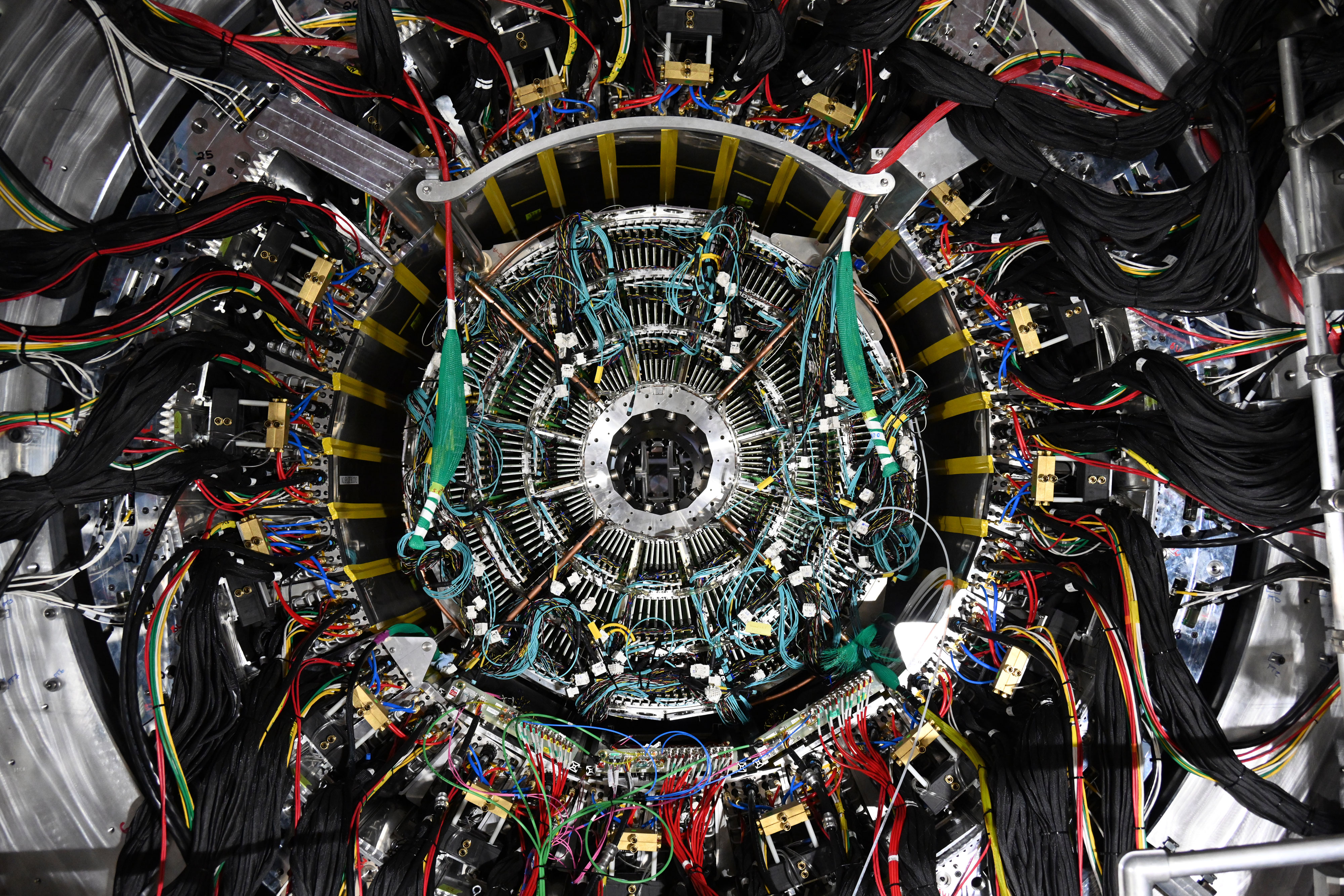The TPC is a gas-filled detector that, combined with the detector’s strong magnetic field, allows nuclear physicists to measure the momentum of charged particles streaming from RHIC collisions. It is one of many detector components that nuclear physicists will use to glean more information about the quark-gluon plasma (QGP)—a primordial soup made up of matter’s fundamental building blocks, quarks and gluons.
“QGP existed at the dawn of the universe some 14 billion years ago, about a millionth of a second after the Big Bang,” said Thomas Hemmick, a physicist at Stony Brook University (SBU) and a collaborator on RHIC research “RHIC’s collisions and sPHENIX’s ability to capture snapshots of particles traversing the QGP will help scientists understand how quarks and gluons cooled and coalesced to form the protons and neutrons that make up the atomic nuclei of all visible matter in the universe today.”
The TPC is among several tracking components layered inside a 20-ton cylindrical superconducting magnet at the heart of the sPHENIX experiment. Its outstanding momentum resolution is key to capturing small differences among three states of particles called upsilons (made of heavy quark-antiquark pairs) as they interact with the QGP. sPHENIX’s ability to distinguish the mass of each upsilon variety will help physicists map the transition from the trillion-degree primordial QGP to ordinary nuclear matter.
sPHENIX crews rigged the TPC to be carefully lifted, then meticulously moved into place within the house-sized detector. (Hover over image to reveal slideshow controls.)
To detect upsilons, sPHENIX will measure the tracks of charged particles into which each upsilon has decayed. As each charged particle passes through the TPC’s volume of gas, it will leave a trail of ionization by knocking electrons off the gaseous atoms—about 100 freed electrons per centimeter.
While it’s tricky to detect just 100 electrons, the TPC consists of several layers of gas electron multiplier (GEM) foils, Hemmick said.
“Each GEM foil funnels electrons through a small hole—smaller than the diameter of a human hair—wherein an electron ‘avalanche’ creates a large, detectable signal,” Hemmick explained.
The resulting readout will show physicists, over time, where particles were within the TPC’s entire volume—a hollow cylinder about two meters long—like frames of a movie produced every 50 nanoseconds. The paths of these particles will curve in the magnetic field created by the sPHENIX magnet, revealing clues about their “parent” upsilon. These precision upsilon measurements will be one of many ways sPHENIX will study the properties of the QGP.
Teams at SBU, the Weizmann Institute of Science, Wayne State University, Vanderbilt University, and Temple University built and tested different parts of the TPC before it was fully assembled at SBU, then shipped to Brookhaven Lab for further testing and installation. At SBU, students from high schoolers to Ph.D. candidates had a hand in the device’s construction, Hemmick said.
“It’s truly the product of generations of young students,” Hemmick said. “It was an honor to guide them.”
RHIC is a DOE Office of Science User Facility.
sPHENIX and operations at RHIC are funded by the DOE Office of Science.
Brookhaven National Laboratory is supported by the Office of Science of the U.S. Department of Energy. The Office of Science is the single largest supporter of basic research in the physical sciences in the United States and is working to address some of the most pressing challenges of our time. For more information, visit science.energy.gov.
Follow @BrookhavenLab on Twitter or find us on Facebook.


